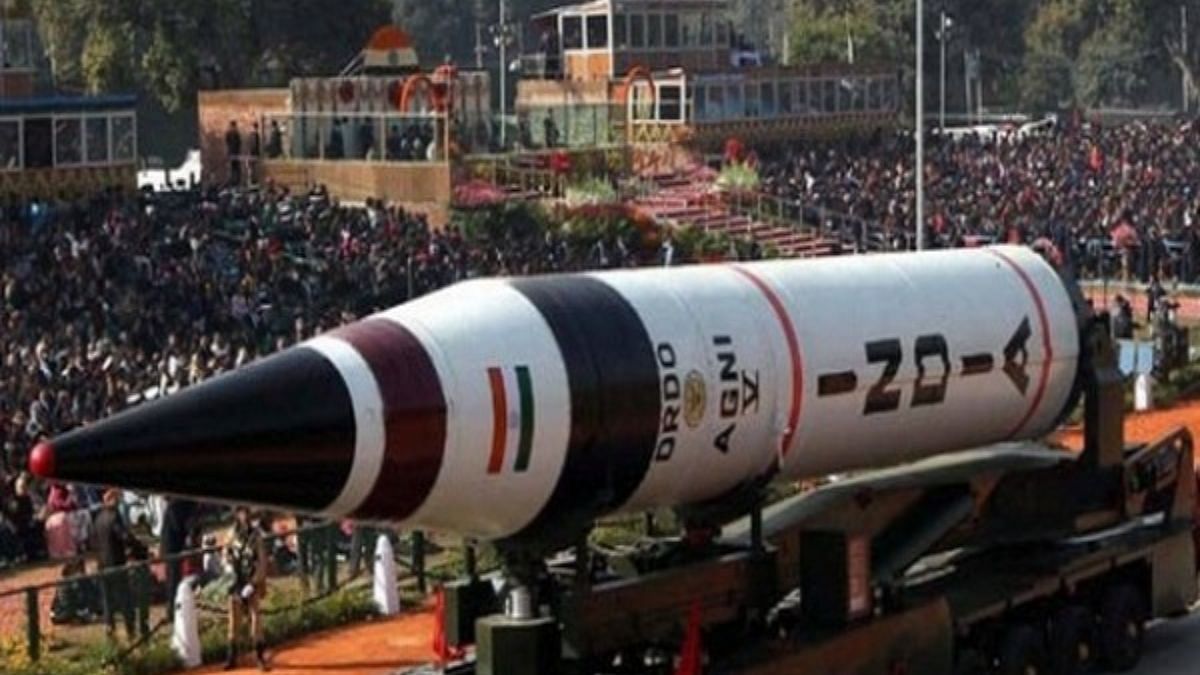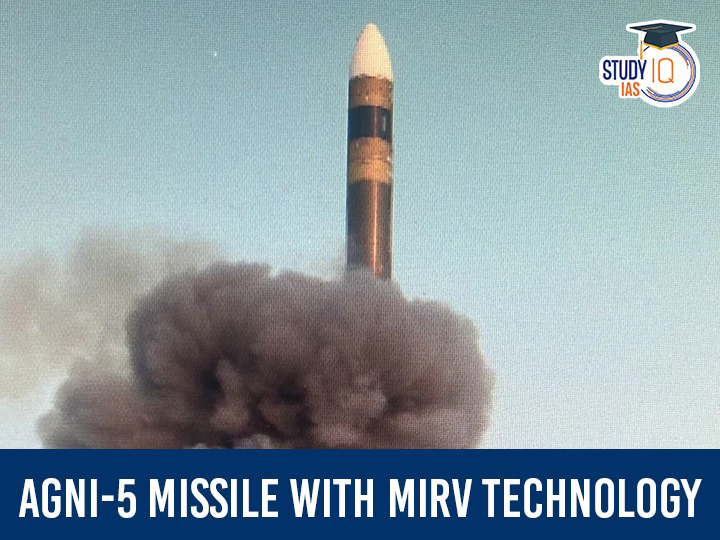Table of Contents
India has test-fired its Agni-5 intermediate-range ballistic missile successfully from the Integrated Test Range at Chandipur, Odisha. The test on August 20, 2025, was a routine user trial under the Strategic Forces Command. The test confirmed all operational and technical parameters of the missile, developed indigenously, with a strike range of more than 5,000 kilometres and a central part of India’s nuclear deterrence doctrine.
India Tests AGNI 5 Missiles Successfully
- India successfully test-fired the Agni-5 intercontinental ballistic missile (ICBM) that can travel more than 5,000 km.
- It is equipped with advanced navigation, guidance, and control systems to provide high accuracy.
- Enhances India’s nuclear deterrence capability as well as defence preparedness.
- Increases long-range strike capability, striking targets in Asia and beyond.
- Demonstrates India’s commitment to regional security and strategic stability.
About Agni-5 Missiles
The Agni-5 is India’s most sophisticated intercontinental ballistic missile (ICBM) with a strike range of more than 5,000 km, designed by DRDO under the nation’s strategic missile program. Fitted with advanced navigation, guidance, and control systems, it is highly accurate and reliable.
The missile is also made to be compatible with MIRV (Multiple Independently Targetable Reentry Vehicle) technology, allowing it to target multiple targets at once. Its test with success greatly enhances India’s strategic deterrence, enhances the capability of long-range defence and national security and reinforces India’s position as a major power in missile technology.
- Type: The Agni-5 missile is an advanced, long-range missile, surface-to-surface ballistic missile.
- Developed by: Defence Research and Development Organisation (DRDO).
- It represents the latest variant in the Agni series, which has been part of the Indian armed forces’ arsenal since the early 1990s.
- Technology: This missile is equipped with Multiple Independently Targetable Re-entry Vehicles (MIRVs)

Capabilities
- The Agni-5 has a range of more than 5,000 km, categorising it as a long-range missile.
- It is capable of carrying nuclear warheads, enhancing India’s strategic deterrence capabilities, particularly regarding the potential threat posed by China.
About MIRV Technology
MIRV stands for Multiple Independently Targetable Re-entry Vehicle.
- This technology enables a single missile to carry multiple warheads, each of which can be directed towards a different target.
- The targets can be spaced hundreds of kilometres apart, making MIRV-equipped missiles highly versatile and effective strategic weapons.

- Strategic Advantage: The deployment of MIRV technology allows a country to strike multiple targets simultaneously or to overcome missile defence systems by saturating them with multiple incoming warheads.
- Global Presence: Currently, the technology is possessed by a select group of countries, including the United States, Russia, China, France, and the United Kingdom, all of which have MIRV-equipped missiles.
- These missiles can be launched from various platforms, including land-based silos and submarines.
- Pakistan is in the process of developing its MIRV-capable missile system.
- Similarly, Israel is suspected of either possessing or developing such technology, although specific details may not be publicly available.
We’re now on WhatsApp. Click to Join
Difference Between Cruise And Ballistic Missiles
| Aspect | Cruise Missile | Ballistic Missile |
| Flight Path | Low-level, terrain-hugging, within the atmosphere | High arcing, parabolic trajectory, exits and re-enters the atmosphere |
| Propulsion | Jet engine, sustained propulsion throughout flight | Rocket boosters, propelled initially, coast without propulsion mid-flight |
| Guidance Systems | Advanced guidance with GPS, inertial, TERCOM or image-based systems | Inertial, sometimes with star sighting or GPS, terminal phase guidance |
| Speed and Altitude | Generally subsonic or supersonic, it flies at lower altitudes | Hypersonic speeds reach extremely high altitudes |
| Defensive Countermeasures | Hard to detect due to low altitude and potential for stealth technology | Easier to detect at launch, difficult interception due to speed and trajectory |
| Purpose and Use | Precision strikes against specific targets require controlled flight paths | Delivery of strategic payloads, including nuclear, across continents |
| Examples (India) | BrahMos, Nirbhay | Prithvi I, Prithvi II, Agni I, Agni II and Dhanush missiles. |


 National Project for Strengthening Disas...
National Project for Strengthening Disas...
 CAG Report on Pradhan Mantri Kaushal Vik...
CAG Report on Pradhan Mantri Kaushal Vik...
 NITI Aayog Report on Public R&D Inst...
NITI Aayog Report on Public R&D Inst...

























